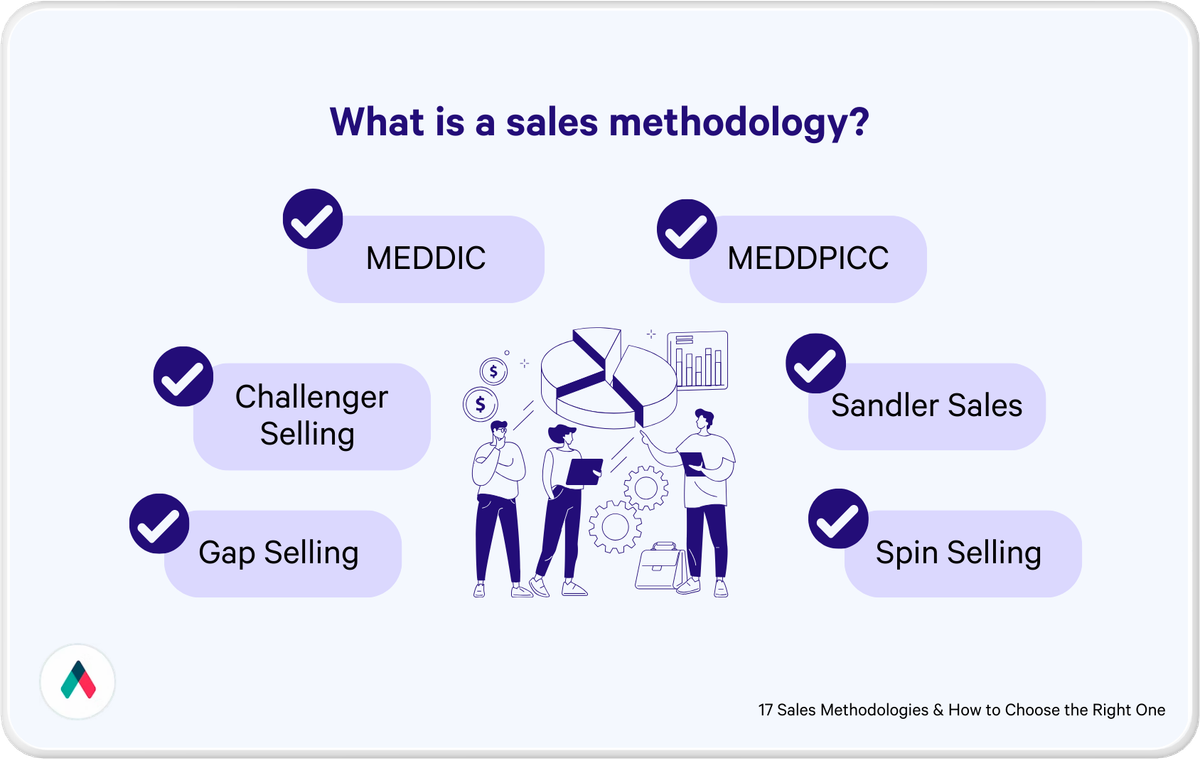Selling is difficult. Sometimes it feels like you’re pitching into a brick wall and not getting much engagement from potential customers. Using your preferred sales methodology, you might send outbound emails and make cold calls with little to show for all the time you spend pitching your services.
While these activities are a big part of selling, there are other ways to create a superior buying experience for customers, and let’s face it, no one really likes being pitched at blindly.
Consider leveraging a mutual action plan to create a more buyer-centric sales process. This modern way of selling involves potential customers at every step of the sales process and can produce shorter sales cycles and more closed deals.
What is a mutual action plan (MAP)?
A mutual action plan (MAP), sometimes referred to as a mutual close plan, is a framework to help sales teams anticipate and address their buyer’s pain points. It’s a strategic tool that helps sales reps collaborate with buyers across the entire sales process and speeds up the sales cycle.
A MAP ensures the selling team is aligned with the outcomes of the customer and that major milestones in the process are tracked and accomplished.
A benefit of using a mutual action plan is engaging your prospective customer throughout the process. Instead of simply pitching to them, you are working with them to craft the solution and, ultimately, the deal.
If you work in b2b sales with large complex deals and large buying teams, a mutual action plan might be just the thing to help you and your teams get more deals over the finish line. Another incentive to use mutual action plans is that they can help you more accurately forecast projected revenue, and based on the plan, you should know precisely when your deals will close.
Key elements of a mutual action plan
- The buyer: List the buyer (the person who signs the contract) in your mutual action plan and clearly define their role.
- The project or account manager: Like the buyer, the project or account manager is critical to the success of the plan. They will act as the host, ensuring that all of the elements are present and the plan is progressing as it should be.
- The outcomes: All stakeholders in the mutual action plan need to be clear on the intended outcomes of the plan. For the sales team this may mean a contract signature, but it really needs to mean the return on the time and effort invested for both parties.
- The value summary: What is the value this deal will bring to the table for both sides? The mutual action plan should clearly outline all of the potential value of the partnership or deal.
- Key stakeholders: List out all of the key stakeholders. This should include team members outside of the core team like senior leadership, procurement, finance, and legal if they are not part of the day-to-day activities of the plan.
- Budget information: The team should align on a budget both for the execution of the plan and any business that is proposed throughout the collaboration. This may also include timeboxing certain activities.
- Milestones: List out key milestones in the plan. This might include the conclusion of a discovery phase, a formal presentation, a Q&A period, and even new client onboarding.
How mutual action plans benefit sales teams
Speeding up the B2B buyers’ journey is a priority for all modern sales teams. Mutual action plans assist in closing more deals and speeding up the process by:
- Improving alignment with prospects: MAPs provide a clear roadmap for sales teams and prospects, keeping everyone on the same page. This helps to create trust and transparency through every stage of the sales process.
- Outlining milestones and accountability: Defined milestones are a core element of mutual action plans and aid in reducing misunderstandings and keeping stakeholders accountable.
- Boosting collaboration: With these plans, prospects and sales reps have open lines of communication at all times, keeping everyone engaged.
- Personalizing the buyer experience: Mutual action plans create a buyer-centric approach and enhance the buyer experience.
- Enhancing deal qualification: If sales teams use a mutual action plan it takes the guesswork out of assessing whether a buyer is actually committed to seeing the deal through.
- Providing predictions and forecasting: Each step of the sales process is clearly outlined in a mutual action plan, helping sales reps better predict closures and more accurately forecast sales.
When MAP's are introduced into a process with an already active buying committee, I'm yet to see it NOT become a powerful tool for aligning on the close plan and being a positive indicator the deal will close. Focus on developing a process that gets you access and alignment to your buying team. Your investment in MAP's will really start to pay off.
Adam Baker, the Founder & CEO of Dealpad
How to create a mutual action plan?
While the mutual action plan is designed to be created with your potential customer, as the salesperson, you’ll lead the process and act as the project manager, ensuring everyone’s tasks are completed correctly, and the deal remains on track through the entire buying process.
Define your objective
The objective of your mutual action plan is not just to close a deal - that might not have a mutual benefit for you and your customer. You should work together to focus on an objective where everyone wins.
You want to focus more on the impact and value to the end users (which would be enabled by your solution). And while it may seem like a simple way to push buyers to your solution, it’s also an opportunity to overcome sales objections right out of the gate.
Outline roles and responsibilities
Everyone participating in the mutual action plan is likely very busy with competing priorities. So, when setting up your mutual action plan, it’s a good idea to outline who is on the team and their commitment to the plan.
The person’s role and responsibilities may differ from their job titles, so it’s good to list them in your plan. For example, as a salesperson, you’ll also wear the project manager hat. Your main point of contact might be a director of analytics in his or her day-to-day, but as far as your plan goes, they will own getting you access to necessary data, providing use cases and customer success metrics. Your prospect’s chief general counsel might oversee contract negotiation, and your client’s boss might provide oversight and final approvals.
However you’re planning to split up the work, ensure everyone’s role is accounted for—especially regarding the buying team. This way you can also use this to guide your buyer engagement strategy and ensure everyone’s needs are met. Priorities are accounted for across the entire plan, making it easier for your prospect to say yes.
Map out your timeline
A timeline is essential so your plan comes to completion at an agreed-upon point. If you don’t map out a timeline, it’s easier for other priorities to take over, deadlines to be missed, and the plan never to find its way to being completed.
You will want to account for any deadlines on your potential client’s side (like the budget request being due), any significant milestones on your side, and vacation or PTO periods for all team members. For example, if the primary decision maker is heading out on parental leave in around six months and will be gone for ten weeks - account for that when planning your initial timeline.
The timelines may need to shift throughout the team’s work on the plan, but being as proactive as possible will prevent shifts from throwing major wrinkles that could have been avoided.
Consider the final timeline, your roadmap to close the deal, and the milestones where you’ll need your key stakeholders' buy-in.

Add action items and deliverables
Once your timeline is mapped out, you want to add action items and deliverables. You also need to add specific due dates for each and have one person on the team assigned to each. This way, you’ll know who to check in with for updates or how to follow up if something isn’t done on time.
Your mutual action plan should be the source of truth for everything related to your deal. You want to make sure someone is responsible for updating any notes or decks from sales presentations and any raw data collected as part of the plan. This could be in the form of uploading Excel files or linking Google Sheets within the mutual action plan.

End with projected outcomes and ROI calculations
Another key element to document in your mutual action plan is the projected outcomes and any ROI calculations. Having these items documented and agreed upon will help boost your win rates when the time finally comes to close the deal. It can also help speed up negotiations as you get closer to your projected close date.
The reason you want to map these out with your key stakeholders on the buyer’s side is to ensure that the key outcomes each individual is looking for are represented. It would be frustrating to find out you’ll lose a deal because someone on the buying team’s interests wasn’t represented. So having the buying team participate in the creation of the projected outcomes and ROI calculations can act as insurance to prevent this from happening.
With Qwilr’s web-based mutual action plan template, you can easily add an interactive ROI calculator to showcase potential savings.

Mutual action plan template
When building a modern mutual action plan, spreadsheets alone are so out! Sales teams need ways to collaborate with buying teams in real time - ensuring everyone has the most up-to-date information as the deal evolves.
This is why we’ve created a mutual action plan template in Qwilr. You can customize this proposal template using your company branding and styles as well as any boilerplate copy that should be included in any plan (like example, terms and conditions or contract language).
By creating your plan in Qwilr’s web-based proposal platform, your buyer can interact and revisit the same link over and over and see a history of what you’ve discussed without needing to find an email and attachment.
Our template features integrations with the most popular CRMs (like Salesforce and Hubspot), so your sales team can save time when creating their plans. Key customer data can be seamlessly imported into the plan so sellers can focus on other tasks and ensure key dates and milestones are outlined to keep the deal on track.
Starting from a template and automating the import of key data can create streamlined workflows, saving hours better spent meeting with customers and advancing deals.
Looking to introduce a Mutual Action Plan into your sales process? Get started with Qwilr’s Mutual Action Plan template.
Mutual action plan best practices
When it comes to creating a mutual action plan, you may want to steal some tips and tricks from both your sales experience and good project management discipline. Here are a few best practices to consider when creating and executing your own Mutual Action Plans.
Start with a kick-off meeting
When initiating a mutual action plan, it's best to start with a kick-off meeting. Invite all of the key stakeholders to get together to introduce themselves and their goals and roles. Review the information you have so far and the information you will still need to gather and align on.
Remember that first impressions matter here, so make sure you’re set up for success before the meeting. This includes providing all of the relevant meeting notes ahead of time, setting a formal agenda, and assigning any speaking roles. Remember to also dress for success, even if you’re going to be on Zoom.
Align on goals and expectations
Nothing will sink a good mutual action plan faster than misaligned goals or unmanaged expectations, so it's best to set these goals at the very beginning. Make sure both sides know what to expect and what the intended outcome will be. This way no one will be upset at the end when an uncommunicated expectation hasn’t been met.
Use a RACI chart to assign roles and deadlines
While your mutual action plan should have detailed roles and deadlines, you may want to try using a RACI chart in your kick-off meeting or another meeting early in your timeline to assign roles. RACI is an acronym that stands for Responsible, Accountable, Consulted, and Informed.
The responsible party is the person who will perform the task. The accountable party is the one who will ensure the task is completed. Someone who is consulted may provide insight along the way. And the party or parties who are informed is pretty self-explanatory; they’re taking in the information. By having these roles clearly defined, it's easy to know who is doing what, and by when. Otherwise, if work is tackled by committee, it's easy to assume someone else is going to do it.
Check-in periodically
After the kick-off meeting and assigning roles, you want to make sure you check in with the team periodically. Are tasks being completed? Is the plan working as intended? These get-togethers can help ensure the plan is progressing, but they’re also a great opportunity to build relationships.
Determine what happens once the plan has been executed
Once the plan has been executed and the goals have been achieved, make sure both sides are aligned about what happens next. If there is an opportunity to close a deal and continue the partnership, make sure everyone is clear on how that should work. If that is not the case, how do you part ways? Is there an opportunity to check back in or try again at a later time?
Getting to deal closes, together
Sales is a team effort. Whether you’re working with your sales leader, fellow account executives, or even operational professionals on your team, you rarely sell a deal alone.
When using a mutual action plan, you’re adding your potential customers to the team and working together to streamline both the sales process and the buyer’s journey. This type of sale can be very appealing to b2b buyers who are tired of being pitched at and sold to.
By working together to define success criteria early, you’re removing roadblocks and setting yourself up for sales success. But you, have to get your MAP integrated into your sales process at the right time. Ready to get started? Grab a 14-day free trial and start using our Mutual Action Plan Template in minutes.
About the author

Marissa Taffer|Founder & President of M. Taffer Consulting
Marissa Taffer is the Founder & President of M. Taffer Consulting. She brings over 15 years of sales and marketing experience across various industries to a broad range of clients.







